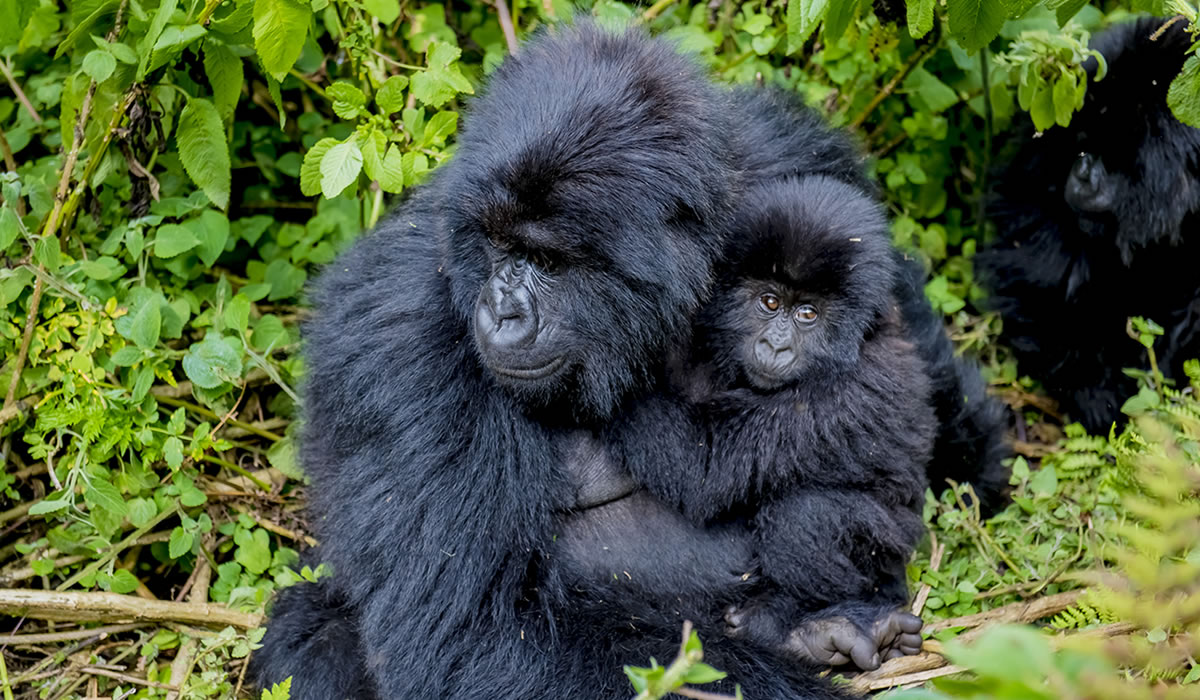Nestled in the misty highlands of northwestern Rwanda, Volcanoes National Park is a sanctuary of biodiversity and one of the most iconic destinations for gorilla trekking in Africa. This lush expanse of rainforest, bamboo thickets, and volcanic slopes is home to the endangered mountain gorilla an elusive and majestic species that draws thousands of visitors each year. Gorilla trekking in Volcanoes National Park is not just a wildlife experience; it’s a transformative journey into the heart of nature, conservation, and human connection with one of our closest relatives in the animal kingdom.

Volcanoes National Park, also known as Parc National des Volcans, spans approximately 160 square kilometers and forms part of the larger Virunga Conservation Area, which includes Uganda’s Mgahinga Gorilla National Park and the Democratic Republic of Congo’s Virunga National Park. The park is named after the chain of dormant volcanoes that dominate its skyline, Mount Karisimbi, Mount Bisoke, Mount Muhabura, Mount Gahinga, and Mount Sabyinyo. These towering peaks, often shrouded in mist, create a dramatic backdrop for the dense forests that shelter the mountain gorillas.
Established in 1925, Volcanoes National Park is Africa’s oldest national park and a cornerstone of Rwanda’s conservation efforts. It gained global recognition through the work of primatologist Dian Fossey, whose groundbreaking research and advocacy for gorilla protection laid the foundation for modern conservation in the region. Her legacy lives on through the Dian Fossey Gorilla Fund and the Karisoke Research Center, both of which continue to support gorilla research and community engagement.
The Gorilla Trekking Experience
Gorilla trekking in Volcanoes National Park begins early in the morning at the Kinigi park headquarters. Visitors gather for a mandatory briefing led by experienced rangers, who explain the trekking protocols, safety guidelines, and the importance of respecting the gorillas’ natural habitat. Trekkers are then divided into small groups of up to eight people, each assigned to one of the 12 habituated gorilla families in the park. These families include Susa, Amahoro, Sabyinyo, Agashya, Umubano, Kwitonda, and others, each with its own unique dynamics and personalities.
The trek itself is a physically demanding but deeply rewarding adventure. Depending on the location of the assigned gorilla group, the hike can last anywhere from 2 to 8 hours, traversing steep slopes, muddy trails, and dense vegetation. Porters are available to assist with carrying gear and providing support, and their services are highly recommended not only for convenience but also as a way to support the local economy.
Once the gorilla group is located, trekkers are allowed to spend a precious hour in their presence. This moment is nothing short of magical. Observing the gorillas as they feed, groom, play, and interact in their natural environment offers a profound sense of connection and awe. The dominant silverback, often the centerpiece of the group, exudes strength and calm authority, while the juveniles bring energy and curiosity to the encounter. Photography is permitted, but flash is strictly prohibited to avoid disturbing the animals.
Conservation and Community Impact
Gorilla trekking in Volcanoes National Park is a model of sustainable tourism and conservation. The high cost of gorilla permits currently $1,500 for foreign non-residents, $500 for foreign residents, and $200 for East African citizens helps fund conservation initiatives, anti-poaching efforts, and community development projects. A portion of the revenue is shared with local communities, supporting infrastructure, education, and healthcare.
The park’s success in gorilla conservation is evident in the growing population of mountain gorillas, which now exceeds 1,000 individuals across the Virunga massif. This achievement is the result of collaborative efforts between the Rwandan government, conservation organizations, researchers, and local communities. Gorilla tourism has become a vital economic driver, empowering communities to protect their natural heritage and benefit from its preservation.
Best Time to Visit Volcanoes National Park
Gorilla trekking in Volcanoes National Park is available year-round, but the best time to visit is during the dry seasons, June to September and December to February. These months offer more favorable trekking conditions, with less rainfall and clearer trails. However, the park’s misty climate means that weather can be unpredictable, and trekkers should be prepared for sudden changes.
During the rainy seasons, from March to May and October to November, the trails can be slippery and challenging, but the forest is at its most vibrant and lush. Some travelers prefer this time for the quieter atmosphere and the chance to experience the park in its full natural glory.
Preparing for Your Gorilla Trek
Proper preparation is essential for a successful gorilla trekking experience. Visitors should wear sturdy hiking boots, long-sleeved shirts, and waterproof clothing to navigate the rugged terrain and protect against insects and vegetation. A walking stick, gloves, and a small backpack with snacks and water are also recommended.
Fitness is a key consideration, as the trek can be strenuous. While the park staff tries to match groups with gorilla families based on trekking difficulty and fitness levels, it’s important to be honest about your physical capabilities during the briefing. Those with mobility challenges can request easier treks or even be carried in a sedan chair by porters for an additional fee.
Other Attractions in Volcanoes National Park
While gorilla trekking is the main draw, Volcanoes National Park offers a range of other activities for nature lovers and adventure seekers. Golden monkey tracking is a popular option, allowing visitors to observe these playful primates in the bamboo forests. The park is also a haven for birdwatchers, with over 200 species recorded, including the Rwenzori turaco and the handsome francolin.
For those interested in hiking, the park offers several challenging trails, including the ascent to Mount Bisoke’s crater lake and the trek to Mount Karisimbi, the highest peak in Rwanda. The Dian Fossey Tomb hike is a poignant journey to the site where the legendary primatologist was laid to rest, surrounded by the forest she dedicated her life to protecting.
Accommodation and Accessibility
Volcanoes National Park is easily accessible from Kigali, Rwanda’s capital, with a scenic two-hour drive through rolling hills and picturesque villages. The town of Musanze, located near the park, serves as the main hub for gorilla trekking and offers a range of accommodation options—from budget guesthouses to luxury lodges.
Top lodges include Bisate Lodge, Sabyinyo Silverback Lodge, and Five Volcanoes Boutique Hotel, all of which provide comfortable amenities, stunning views, and proximity to the park headquarters. Booking accommodation and gorilla permits well in advance is highly recommended, especially during peak seasons.
Gorilla trekking in Volcanoes National Park is more than a bucket-list adventure, it’s a soul-stirring encounter that leaves a lasting imprint on every traveler. The chance to stand face-to-face with mountain gorillas in their natural habitat is a rare privilege, made possible by decades of conservation and community collaboration. As you navigate the misty trails and immerse yourself in the rhythms of the forest, you’ll discover not only the beauty of Rwanda’s wildlife but also the resilience and spirit of its people.
Whether you’re a seasoned explorer or a first-time visitor to Africa, Volcanoes National Park offers an unforgettable experience that blends adventure, education, and emotional connection. It’s a journey that reminds us of our shared responsibility to protect the planet’s most vulnerable species and the profound joy that comes from witnessing nature at its most raw and real.

